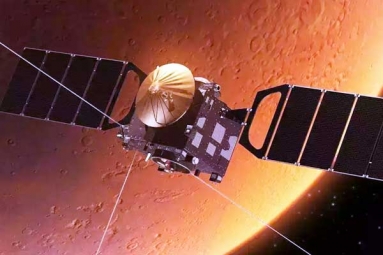
It is a mission that has been under the work for nearly 60 years. NASA said that, in 2018, it is going to launch a spacecraft to "touch the sun," sending the spacecraft closer to the stars surface than ever before.
The spacecraft is small and its instruments would fit into the refrigerator, but the spacecraft is built to withstand the temperatures of more than 2,000 degrees Fahrenheit, all the while maintaining the room temperature inside the spacecraft.
"Even though the sun is so close to us, there's actually a lot about it we don't understand," said the heat shield lead engineer, Betsy Congdon, who is from the Johns Hopkins University Applied Physics Laboratory.
Scientists are hoping that the data gathered would solve some of the big mysteries revolving around the sun.
First question is that, what allows the sun to fling the winds out at supersonic speeds? Understanding this is very important for protecting the astronauts during space travel, Congdon said, and also solar events can damage the satellites and also knock out power on Earth.
"Unless we can explain what is going on up close to the sun, we will not be able to accurately predict space weather effects that can cause havoc at Earth," NASA said.
Second question is that, why is the sun's atmosphere is actually hotter, which is 300 times hotter than its surface? "That defies the laws of nature. It's like water flowing uphill. It shouldn't happen," the mission project scientist, Nicola Fox of the Johns Hopkins lab said at the news conference.
The spacecraft is expected to complete the 24 orbits over the period more than six years, going closer to the sun while hurtling toward the sun at a speed of 450,000 miles per a hour. The map of the route is:

It is worth noting that the spacecraft will not literally touch the surface of the sun, but the closest the spacecraft will get is about 3.9 million miles away from the star.
But Congdon said that it is actually very close. "If you think about a football field and the sun's sitting on one side and the Earth's sitting on the other, we're getting within the 5-yard line," she said. It is about seven times closer than any other previous mission.
The circuitous route involves moving closer to the sun and again back out to Venus, which means the wild oscillations in temperature. Congdon said that protecting the spacecraft's scientific instruments from getting fried is "quite an engineering feat."
It basically involves "putting up a big umbrella," she said. The shield is the 8-foot wide disc that is made of layers of carbon, that would get burnt into a charcoal crisp if it were not for the fact that there is no oxygen in space.
NASA has announced that, it is naming the spacecraft after Eugene Parker, a retired physicist who has predicted the existence of solar winds almost 60 years ago. Parker is about to turn 90, and this is the very first time that NASA has named a spacecraft after the researcher during their lifetime.
Parker's ideas have fundamentally changed the study of the sun.
But at this point, Fox has compared the state of the field with learning about weather by looking out the window.
"You can see the sun is shining, you can see the birds are singing. But until you actually go out, you have no idea quite how hot it is out there or how windy it is or what the conditions are like," said Fox.
"I really think we've come as far as we can with looking at things and it's now time to go up and pay it a visit."
The European Space Agency is also planning to launch a spacecraft toward the sun.
Humans have 100 years to leave Earth: Stephen Hawking
Mrudula Duddempudi.







